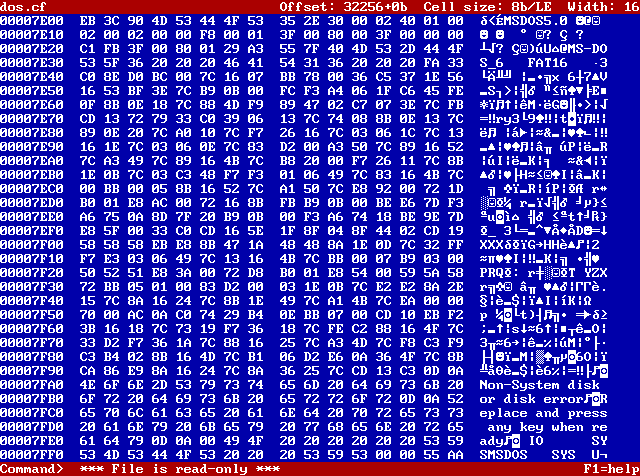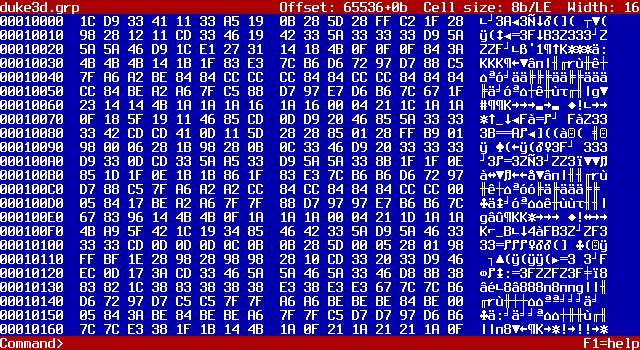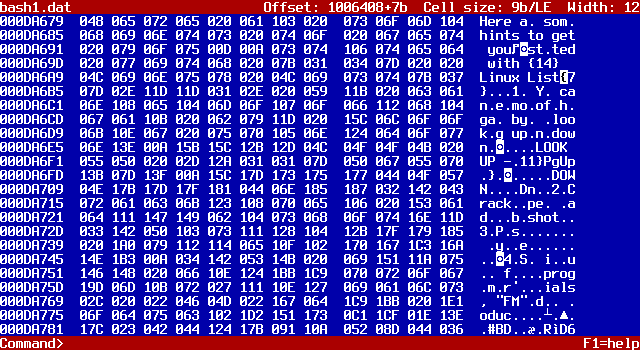A Linux clone of Vernon D. Buerg's List file viewer
Copyright 2009-2016 Adam Nielsen malvineous@shikadi.net
https://github.com/Malvineous/linuxlist
This program is still very early in development, so there is still much to implement before it becomes as useful as the original List.
Features:
-
Hex viewer, with full 8-bit CP437 glyphs (UTF8 console required), so that binary files look like they did under DOS.
-
Adjustable byte size. Viewing data as nine-bits per "byte" helps considerably when examining LZW-compressed data. Both big and little endian splitting is supported.
-
Hex view supports hex editing (via byte values and direct text entry)
-
Can seek at the byte level or the bit level, which is useful for tracing algorithms that operate on a stream of bits rather than on bytes.
The utility is compiled and installed in the usual way:
./autogen.sh # Only if compiling from git
./configure && make
sudo make install
You will need the following prerequisites already installed:
- libgamecommon >= 2.0
This program is released under the GPLv3 license.
This is the hex view in Xorg, using the VGA font borrowed from DOSBox:
This is the hex view using the rxvt-unicode terminal emulator with the Terminus font:
This is the hex view showing nine bits per byte, which reveals ASCII characters in some LZW-compressed data. Note the data is being edited in this mode as well:
When running in a terminal emulator (automatic if the DISPLAY environment
variable is empty), use of a Unicode font that supports CP437 glyphs is
recommended. Without this, most terminal emulators will pull the glyphs from a
fallback font, which usually looks quite bad.
For the rxvt-unicode terminal and the Terminus font (used for the screenshots
above), this is done by ensuring the ISO10646 encoding is used. This can be
done by adding the following to ~/.Xresources:
Rxvt*font: -*-terminus-bold-r-*-*-*-140-*-*-*-*-iso10646-*
Rxvt*boldFont: -*-terminus-bold-r-*-*-*-140-*-*-*-*-iso10646-*
Run xrdb -merge ~/.Xresources to reload the file, then any new rxvt-unicode
terminal windows will correctly display control characters.


